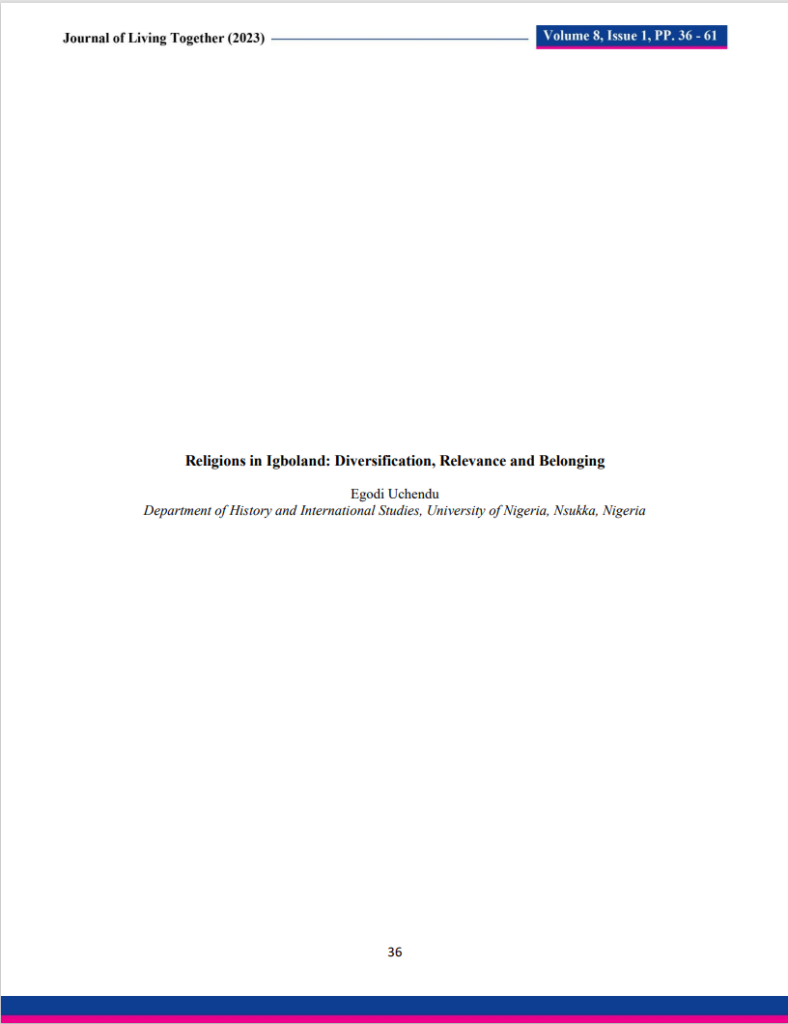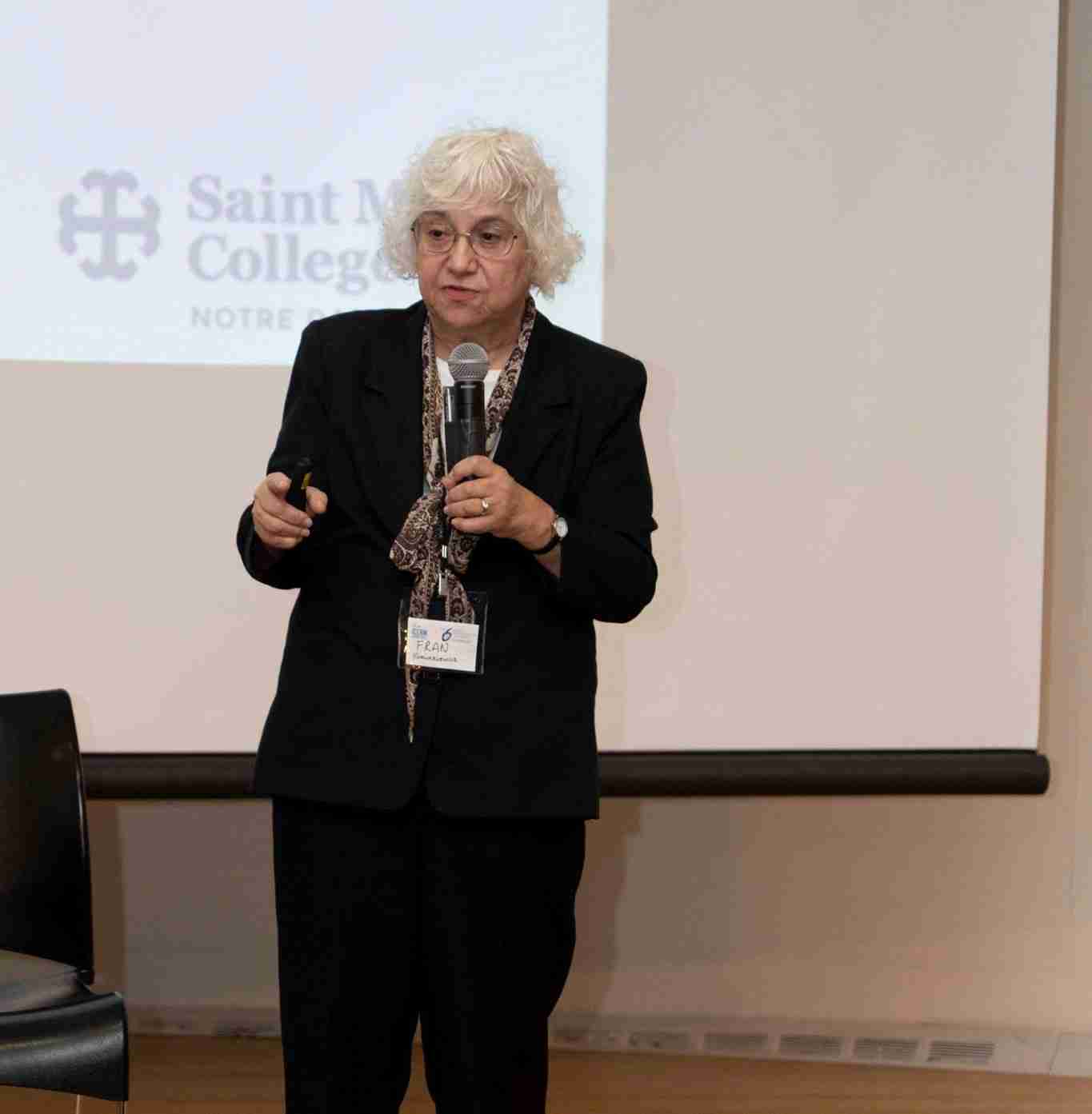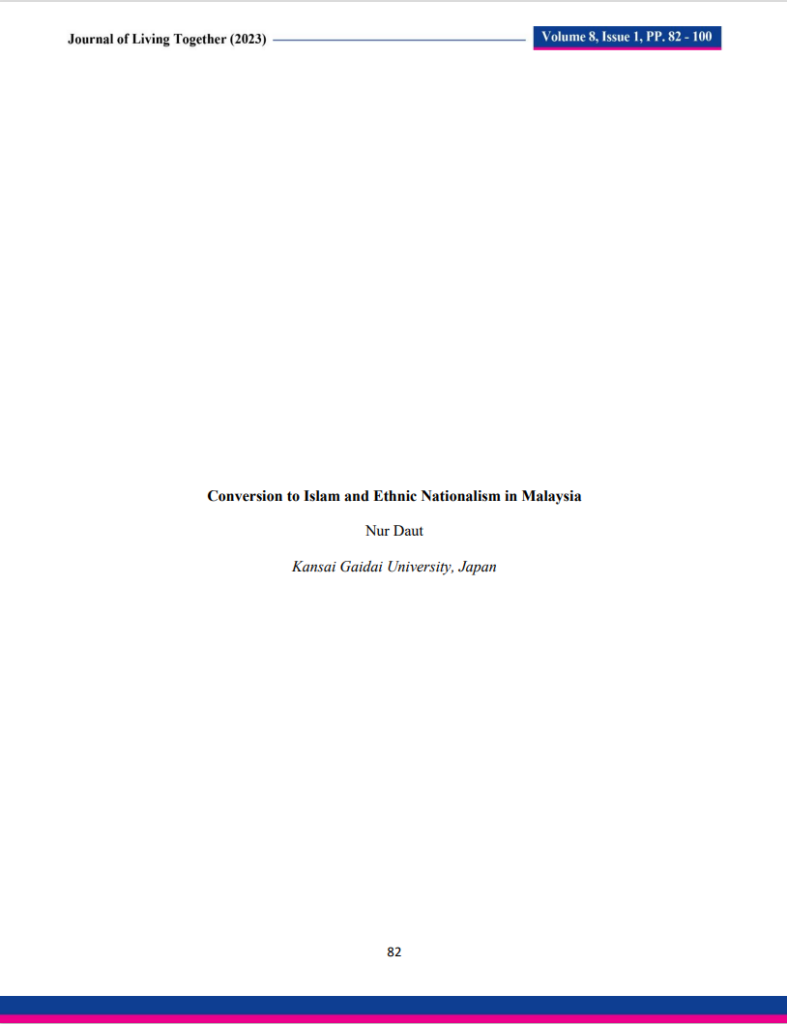Remembering Forgotten Genocides

Abstract:
As one who spent much of his professional life investigating Burundi’s tormented history, I welcome this opportunity to shed light on one of the least remembered and widely misunderstood genocides of the last century: in 1972 Burundi became the scene of an orgy of ethnically targeted violence — which I do not hesitate to describe as a genocide — when anywhere from 200,000 and 300,000 Hutu civilians were massacred at the hands of a Tutsi dominated army. More than 40 years later, I remember the Burundi tragedy as if it happened yesterday, in part because it is associated in my mind with the loss of many close friends, because of its causal relationship to the 1994 genocide of Tutsi in Rwanda, and because the silence of the media surrounding the events of 1972 were in obvious contrast with the frenzy of press coverage about the Rwanda bloodbath.
Download The Article
Suggested Citation:
Lemarchand, R. (2014). Remembering Forgotten Genocides. Journal of Living Together, 1(1), 27-31.
Article Information:
Title = {Remembering Forgotten Genocides}
Author = {René Lemarchand}
Url = {https://icermediation.org/forgotten-genocides/}
ISSN = {2373-6615 (Print); 2373-6631 (Online)}
Year = {2014}
Date = {2014-09-18}
IssueTitle = {The Role of Religion and Ethnicity in Contemporary Conflict: Related Emerging Tactics, Strategies and Methodologies of Mediation and Resolution}
Journal = {Journal of Living Together}
Volume = {1}
Number = {1}
Pages = {27-31}
Publisher = {International Center for Ethno-Religious Mediation}
Address = {Mount Vernon, New York}
Edition = {2014}.
As one who spent much of his professional life investigating Burundi’s tormented history, I welcome this opportunity to shed light on one of the least remembered and widely misunderstood genocides of the last century: in 1972 Burundi became the scene of an orgy of ethnically targeted violence — which I do not hesitate to describe as a genocide — when anywhere from 200,000 and 300,000 Hutu civilians were massacred at the hands of a Tutsi dominated army. More than 40 years later, I remember the Burundi tragedy as if it happened yesterday, in part because it is associated in my mind with the loss of many close friends, because of its causal relationship to the 1994 genocide of Tutsi in Rwanda, and because the silence of the media surrounding the events of 1972 were in obvious contrast with the frenzy of press coverage about the Rwanda bloodbath.
The Burundi genocide is not the only horror story that has fallen into oblivion. In my edited volume on Forgotten Genocides: Oblivion, Denial and Memory, my contributors and I deal with such rarely remembered cases as the Herero of German South-West Africa, the Kurds of Iraq, the Aborigines of Tasmania, the Assyrians in 19th century Ottoman Turkey, the Hutu refugees from Rwanda in eastern Congo, the Roma during Nazi rule, and the Tibetans in contemporary China. This is only a small sample. In his recently published public accusation entitled The Blood Telegram: Nixon, Kissinger and a Forgotten Genocide, Gary Bass offers a devastating indictment of Nixon’s policies at the time of the break-up of Pakistan and the birth of Bangladesh. Nixon and Kissinger, according to Bass, by uncritically supporting the Pakistani military against India, were indirectly responsible for the death of hundreds of thousands of Bengali. With the White House looking the other way, the Pakistani army killed at least 300,000 Bengali, most of them Hindus, and forced 10 million to flee to India.
Why Remember?
Behind these tales of horror lies an obvious question: Why should we bother to drag such appalling events that unfolded in faraway lands out of the shadows, decades if not centuries ago? The quick answer is that they involve the lives and deaths of millions of people, who, for a variety of reasons, not the least of which is hatred of the “other”, were wiped off the face of the earth.
This is not a trivial matter. I am reminded of George Santayana’s aphorism: “Those who do not remember the past are doomed to repeat it.” It is incumbent upon us, therefore, as citizens, students and academics, to shine a light on these abominations, even though some of us would rather not be reminded of them, especially where a more clear-eyed and determined stand by US policy makers would have saved hundreds of thousands of lives. Rwanda is of course, the classic example of how the Clinton administration turned a blind eye to a major human tragedy. But as Samantha Power has shown in her outstanding, prize-winning investigation, A Problem from Hell, the same could be said of our policies in Bosnia, Cambodia, Iraq and Kosovo.
As she convincingly shows, the reason for our inaction is not to be found in our lack of resources, but our lack of will, only thinly disguised by pious references to “acts of genocide” (Rwanda), or “respect for national sovereignty.” As we now realize, concern over the likelihood that we could be dragged into a very messy situation in a state about we knew next to nothing, and where we had no obvious interest at stake, was the main reason for Clinton’s decision not to intervene in Rwanda. The same is true of Burundi: it simply did not register on our radar screen as a place where our national interests were at stake.
Lessons from Forgotten Genocides
For those of us trying to elucidate the roots of evil, there are important lessons to be learned from a sustained examination of such seldom remembered atrocities.
If we lift out gaze beyond the Big Five (Strauss) – Holocaust, Rwanda, Armenia, Cambodia and Former Yugoslavia – a number of significant findings come into focus:
- Contrary to what is sometimes taken for granted, genocides are not necessarily state-sponsored; they can also happen as bottom-up phenomena, rooted in grassroots enmities (examples include the Roma and the Aborigines of Australia);
- The roles of victims and perpetrators are often blurred: a group that qualifies as a victimized community at one point in time, can eventually emerge as a perpetrator at a later date, or vice versa (cases in point include both Tutsi and Hutu in Rwanda, and Kurds in Turkey);
- Looking at such cases reminds us of the significance of what Helen Fein calls, “genocide by attrition”, meaning preventing the social reproduction of group members (as in Tibet for example);
- As the case of Burundi dramatically demonstrates, social structure can act as an incubator of violence: where groups are vertically structured, with an ethnic minority at the top and the majority reduced to an inferior status, conflict can easily mutate into genocide;
- Genocide cannot be isolated from its wider geopolitical context, be it regional or global (as was the case during the cold war).
The last of these factors finds a dramatic illustration in the case of Burundi, where the regional context helps explain the local uprising of Hutu insurgents, and the global context the reluctance of the US to intervene.
The 1972 Genocide in Burundi
The dynamics of the Burundi genocide are rooted in both domestic and regional factors. It emerged as a small archaic kingdom centuries before it gained its independence from Belgium in 1962, and before Belgium’s birth as a nation in 1830. It shares with Rwanda a bifurcated social structure, where the Hutu represent about 80 percent of a population estimated at 9 million, the Tutsi 19 per cent and the Pygmoid Twa one percent. While sharing many traits with Rwanda, Burundi was a more complex, more flexible social system, where the monarchy was weak. Until its overthrow by the Tutsi army in 1965, the monarchy was, if anything, a source of social cohesion. While Rwanda acceded to independence as a republic under Hutu rule, Burundi remained a constitutional monarchy under a mixed Hutu/Tutsi government.
The precipitating factor behind the genocide was the Hutu insurgency that broke out in late April 1972 in and around the lakeside communities of Rumonge and Nyanza Lac. This was essentially a peasant revolt ignited by the revolutionary incitements of a handful of opponents, operating from Tanzania and others from the Congo. Most of them were former students at the University of Bujumbura (Butoyi, Ndabiyure and Mpasha). Given the fact that the Hutu community had been socially marginalized and politically excluded for a number of years, it is easy to see why they should have been highly susceptible to anti-Tutsi propaganda. Hundreds or possibly thousands of innocent Tutsi civilians were killed. The Tutsi-dominated army promptly quelled the uprising, and in a matter of days peace was restored to the area.
But then another chapter began that immediately took on the quality of genocide. It involved the systematic rounding up of every educated Hutu male, including school children, university students, civil servants and NGO workers throughout the country. All were subsequently killed, their bodies thrown into mass graves. One Tutsi (ganwa) witness, Boniface Kiraranganiya, estimates the number of Hutu killed at 300,000. “If one day I lose my mind”, he wrote, “the events of 1972 will have contributed to it by 95%.” He describes what he saw as “the paroxysm of madness, a perfect example of what man is capable of doing when all restraints are lifted, when there is nothing left to prevent him from giving free rein to his destructive instincts.” One of the most distinguished victims of the carnage was none other than deposed king Ntare, who had just returned from Uganda after receiving assurances that his life would not be at risk.
The most amazing thing about this orgy of violence is how little impact it has had outside Burundi. Equally astonishing is that the only condemnation issued by the US government (though never made public) came from, of all people, Richard Nixon, in the form of handwritten remarks on a memo from Henry Kissinger, in which he advised against a US intervention. Nixon’s statement captures his sense of anger in the face of what he referred to as Foggy Bottom’s callous attitude and use of double standards:
This is one of the most cynical, callous reactions of a great government to a terrible human tragedy I have seen. When the Paks try to put down a rebellion in East Pakistan, the world screams. When Indians kill a few thousand Paks, no one cares. Biafra stirs us because of Catholics, the Israeli Olympics because of Jews; the North Vietnamese bombings because of Communist leanings in our own establishment. But when 100,000, one third of the people of a black country [sic], are murdered, we say nothing because we must not make blacks look bad (except of course when Catholic blacks are killed). I do not buy this double standard. Tell the weak sisters in the Africa Bureau of State to give a recommendation as to how we can at least show moral outrage. And let’s begin by calling our Ambassador immediately for consultation. Under no circumstances will I appoint a new Ambassador to present credentials to these butchers.
Nixon’s outburst provides a jarring note to the seeming indifference of the US public and policy makers at the time. Significantly, his sense of outrage did not resonate beyond the Oval Office. The assumption that came to dominate the State Department was that, however regrettable, the slaughter posed no direct or indirect threat to US national interest.
Other factors intervened to keep the carnage out of the limelight. One is that human rights issues had yet to emerge as a significant source of public concern; another has to do with the abysmal ignorance – both among the attentive public and policy makers — surrounding Burundi’s past and recent history; yet another is to be found in the fact that, unlike what happened in Rwanda, the génocidaires won the day, and never missed an opportunity to rewrite history from their own biased perspective, in effect claiming that the Hutu insurgency was the harbinger of a genocide of Tutsi – presumably, extraordinary dangers thus required extraordinary remedies.
The Regional Fallout
That it might in due course pose a threat to the stability of the region never entered the minds of policy makers. With the benefit of hindsight, however, it appears that the events of 1972 have had profound consequences within and outside Burundi’s boundaries.
For one thing, for the next twenty years Burundi emerged as a Tutsi-dominated state, thus creating the conditions (i.e., the entrenched political and economic interests) which led to the assassination of the first popularly elected Hutu president, Melchior Ndadaye, on October 21, 1993, following remarkably free and fair elections. For many hard-liners among the Tutsi community, murder was the only way to challenge the verdict of the polls. This game changing event is what unleashed the ten-year civil war between Hutu and Tutsi, causing the loss of an estimated 100,000 lives.
Meanwhile, to the tens of thousands of Hutu refugees who fled to Tanzania in the aftermath of the 1972 genocide, at least as many were added by the civil war. Today the refugee issue has re-entered the country with a vengeance. By 2003 Tanzania was host to about 800,000 refugees (overwhelmingly Hutu), to which must be added 300,000 IDPs. Hundreds of thousands have now returned to Burundi, expecting to recover their land. But in their absence much of this land has been taken over by Tutsi elites, or sold to prospective buyers. In some instances their land has changed hands several times. Restoring their lost properties to the original owners is a hugely complicated problem. Of all the pressing issues, confronting the Nkuruziza government, none is more potentially explosive.
None, that is with the exception of the challenge posed by the FNL (Forces Nationales pour la Libération), the standard bearer of Hutu radicalism, and now the source of considerable violence. The point to be stressed here is that the FNL is the outgrowth of the 1972 genocide: its original incarnation, the Palipehutu (Parti pour la libération du peuple Hutu) was founded in a refugee camp in 1980 by the late Remy Gahutu. It is sadly ironic that the greatest threat confronting the Hutu-dominated government of President Nkurunziza should stem from the most stridently pro-Hutu and anti-Tutsi movement generated by the 1972 genocide.
No less than the murder of Ndadaye, memories of the 1972 genocide of Hutu in Burundi, are critical elements in the background to the Rwanda genocide of 1994. Just as the assassination of Ndadaye sent a powerful message to the Hutu of Rwanda (“the Tutsi just cannot be trusted,”) much the same message was inscribed in the 1972 bloodbath. Both were instrumental in shaping the outlook of the Hutu Power movement in Rwanda, thus contributing in no small ways to the rabidly anti-Tutsi sentiment that has accompanied the 1994 genocide.
Not only are there important, though complex, interconnections between the 1972 and 1994 bloodbaths; although the scale of mass murder in Rwanda was at least twice the size of its analog in Burundi, they both share significant features:
- Both came about in response to real threats to the incumbent governments: the Hutu-led peasant insurgency in Burundi, the Uganda-assisted armed invasion of Rwanda by Tutsi refugee warriors in 1990. Both in short must be seen, to use Helen Fein’s terminology, as “retributive genocides;”
- In each case much of the killing was engineered by youth groups identified with the regime: the Jeunesses Révolutionnaires Rwagasore (JRR) in Burundi; the interahamwe in Rwanda;
- In both instances the international community proved utterly impotent to prevent the worst from happening, not for a lack of appropriate resources but for a lack of will. What Samantha Power identified as the key obstacles to effective intervention in Rwanda – “self-serving caution and flaccid will” — apply equally well to the case of Burundi.
How to Prevent Genocides
What strategies if any can be used to prevent such colossal crimes from happening? The issue has received considerable public attention in recent times. A turning point was the appointment in 2008 of a Genocide Prevention Task Force (GPTF), headed by Madeleine Albright and William Cohen, followed in 2012 by the creation of the Atrocities Prevention Board (APB), a high-level White House task force chaired, until recently, by Samantha Power. The report issued by the GPTF, Preventing Genocide: A Blueprint for US Policymakers (2008), offers a broad range of preventive strategies: i.e. Early Warning: Assessing Risks and Triggering Action; Early Prevention: Engaging before the Crisis; Preventive Diplomacy; Halting and Reversing Escalation; Employing Military Options; International Action: Strengthening Norms and Institutions. Significant though they are, the jury is still out on most of these recommandations. Although international intervention in Libya probably prevented Gadhafi from engaging in a genocidal response to the Bengazi insurgency, in Syria the track record of the international community is not nearly as encouraging.
A detailed commentary on preventive strategies would carry me too far afield. I can only applaud the courage and determination of journalists and scholars, policy wonks and international civil servants – Samantha Power, Gary Bass, Gareth Evans – in trying to name and shame not only mass murderers but those who, consciously or unconsciously, became their allies in perpetrating what Churchill called in 1941 “a crime without a name.” Thanks to Raphael Lemkin, the crime has been given a name, yet a great deal more is needed to stop the g-word from becoming reality.
Let me give the last word to Max Weber, who drew a fundamental distinction between the ethics of ultimate ends and the ethics of responsibility. “There is an abysmal contrast”, he wrote, between conduct that follows the maxim of an ethic of ultimate ends – that is, in religious terms, ‘The Christian does rightly and leaves the results with the Lord’ – and conduct that follows the maxim of an ethic of responsibility, in which case one has to give an account of the foreseeable results of one’s action.” The dangers involved in applying an ethics of ultimate ends as an alternative to an ethics of responsibility are all too clear in the case of Syria; equally clear, however, are the costs of our failure to exercise an ethics of responsibility in the many cases where it could have made a difference – as in Burundi.
References
Adam Hochschild, King Leopold’s Ghosts (Houghton Mifflin, 1998).
Alison Des Forges et al., Leave None to Tell the Story: Genocide in Rwanda (Human Rights Watch and International Federation of Human Rights, 1999).
Benjamin Stora, La Guerre des Mémoires: La France face à son passé colonial (Editions l’Aube, 2008).
Benjamin Sehene, Le piège ethnique (Editions Dagorno, 1999).
Bert Ingelaere, Living Together Again, The Expectation of Transitional Justice in Burundi, IOB Working Paper 2009/6.
Ernest Renan, Qu’est-ce qu’une nation? (Editions mille et une nuits, 1997).
Eva Hoffman, “The Balm of Recognition”, in Nicholas Owen ed., Human Rights, Human Wrongs (Oxford University Press, 1999).
Henry Rousso’s The Vichy Syndrome: History and Memory in France Since 1944 (Harvard University Press, 1991), translated by Arthr Goldhammer.
Jan Vansina, Antecedents to Modern Rwanda: The Nyiginya Kingdom (The University of Wisconsin Press, 2004).
Jan Vansina, Oral Tradition as History (The University of Wisconsin Press, 1985).
Paul Kagame, “Preface”, in Phil Clark and Zachary Kaufman eds., After Genocide: Transitional Justice, Pot-Conflict Reconstruction and Reconciliation in Rwanda and Beyond (Hurst and Co., 2008).
Paul Ricoeur, “Le pardon peut-il guérir?”, Esprit (March-April 1995).
Pierre Nora, “Between Memory and History”, Representations, 26 (Spring 1989).
Primo Levi, The Drowned and the Saved (Vintage Books, 1988).
René Lemarchand, The Dynamics of Violence in Central Africa (The University f Pennsylvania Press, 2009).
René Lemarchand, Forgotten Genocides: Oblivion, Denial and Memory (The University of Pennsylvania Press, 2011).
René Lemarchand, Burundi: Ethnic Conflict and Genocide (Cambridge University Press, 1996).
Richard Slotkin, Regeneration through Violence: The Mythology of the American Frontier, 1600-1860 (Wesleyan University Press, 1973).
Samuel Totten and Rafiki Ubaldo, “Introduction” in Totten and Ubaldo eds., We Cannot Forget: Interviews with Survivors of the 1994 Genocide in Rwanda (Rutgers University Press,2011).
Scott Straus, The Order of Genocide: Race, Power and War in Rwanda (Cornell University Press, 2006).
Stef Vandeginste, “Burundi’s Truth and Reconciliation Commission: How to shed light on the Past while Standing in the Dark Shadow of Politics?”, The International Journal of Transitional Justice (2012).
Biography
René Lemarchand is Emeritus Professor of Political Science at the University of Florida. He has written extensively on the history and politics of the Great Lakes region of Central Africa. His book on Rwanda and Burundi (1970), received the Herskovits Award from the African Studies Association. His latest works include The Dynamics of Violence in Central Africa (2009) and an edited volume on Forgotten Genocides: Oblivion, Denial and Memory (2012). He served as regional advisor on governance and democracy with USAID, first in Abidjan (1992-1996) and then in Accra (1996-1998). He served as visiting lecturer at the University of California at Berkeley, Brown University, Smith College, Concordia University (Montreal) and the Universities of Helsinki, Copenhagen, Bordeaux and Antwerp.



